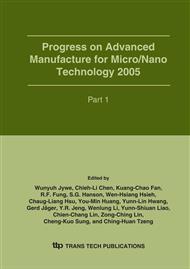p.691
p.697
p.703
p.709
p.715
p.721
p.727
p.733
p.739
A Study on the Effects of Mass and Velocity Factor for the Dynamic-Explicit FEM in the Upsetting Process
Abstract:
Currently, the numerical simulations of metal forming are developed rapidly and widely. In this investigation, a dynamic-explicit FEM code, LS-DYNA, is adopted. Attention on applications of the velocity and mass scaling techniques for the quasi-static upsetting process are modeled. With the differences being variations in the die and punch velocities, the material density, and the mesh type, their effects on the predicted load-reduction height are assessed. Through comparison with experiments, the numerical results have a same tendency as in test works. The influences of the velocity and mass factors are presented, the usage of these scaling factors at proper time also discussed.
Info:
Periodical:
Pages:
715-720
Citation:
Online since:
January 2006
Authors:
Keywords:
Price:
Сopyright:
© 2006 Trans Tech Publications Ltd. All Rights Reserved
Share:
Citation:


